Most of us associate a love of sweets with mammals. However, birds love a sugary treat as well as it provides a quick energy boost during their travels. A food as simple as grape jelly is an amazing way to help the bird population on your property. We’ll discuss some details about 10 of the birds that love to eat grape jelly now.
Why Do Some Birds Like Grape Jelly?
Many migrating birds are attracted to sugar sources during their long journeys. That’s because these migratory birds are following blooming plants up and down the continents of the world. Since they’re following the flourishing of plants, which often means fruit is available, a lot of them have a sweet tooth.
Grape jelly is most useful to wild birds when the insect population is weak. It is also helpful when natural calories are scarce which is especially common if it’s dipping below freezing at night. Those who keep a dish of jelly out for birds will notice that it needs to be refilled much more often in the Spring and Fall.
Sugar-free jelly shouldn’t be used when feeding birds because they can’t process a lot of synthetic sugars. The best jellies to use are sold at pet stores, but jelly from a grocery store is still suitable. The more natural the grape jelly you put on offer, the better nutritional benefit your birds will enjoy.
10. Cedar Waxwings (Bombycilla cedrorum)
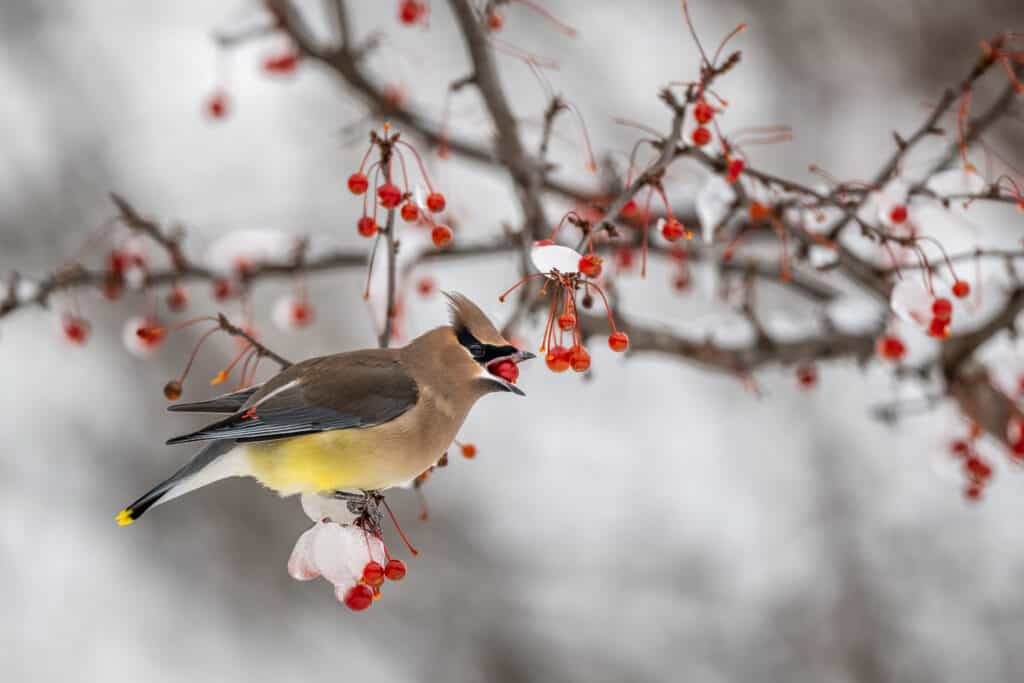
If the feeder seems safe, cedar waxwings will add grape jelly to their menus.
©Skyler Ewing/Shutterstock.com
Cedar waxwings are hesitant to hang out around feeders, but grape jelly on offer may help tempt them into your yard. They’ll only come in groups, so a shallow tray covered in goodies is your best bet when trying to see these birds. A little dollop of grape jelly, cranberries, currants, apple hunks, and raisins are great choices.
9. Chickadees (Poecile)
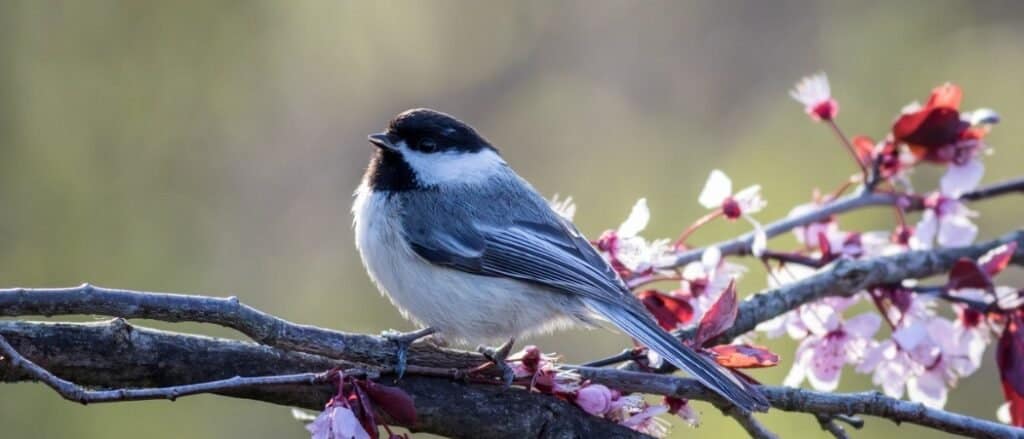
Smaller birds like chickadees can hurt themselves in too big of a jelly offering.
©Rabbitti/Shutterstock.com
Chickadees are one of the smaller birds on this list that are attracted to grape jelly. They also provide a great opportunity to speak about how this food should be served so it doesn’t jeopardize the safety of any snackers.
Jelly should only be offered in a very thin dish, and no more than a few tablespoons should be present at a time. If jelly is too deep, even a quarter of an inch thick, small birds may fall in, get stuck, and quickly die. Chickadees and hummingbirds are especially vulnerable to this fate.
8. Hummingbirds (Trochilidae)

If hummingbirds frequent your yard, you must take precautions to keep them safe around grape jelly.
©Rick Scuteri/Shutterstock.com
An important part of a hummingbird’s diet is simple sugars. As a result, they are drawn to grape jelly. However, they are highly susceptible to immobilization if they get anything on their feathers.
To keep hummingbirds from hurting themselves in jelly, thin the jelly out with one part water. Make sure that the liquid is no more than an eighth of an inch thick. Finally, the dish used to offer up the jelly should have a grippy rim around it that helps birds avoid slipping.
7. Woodpeckers (Picidae)
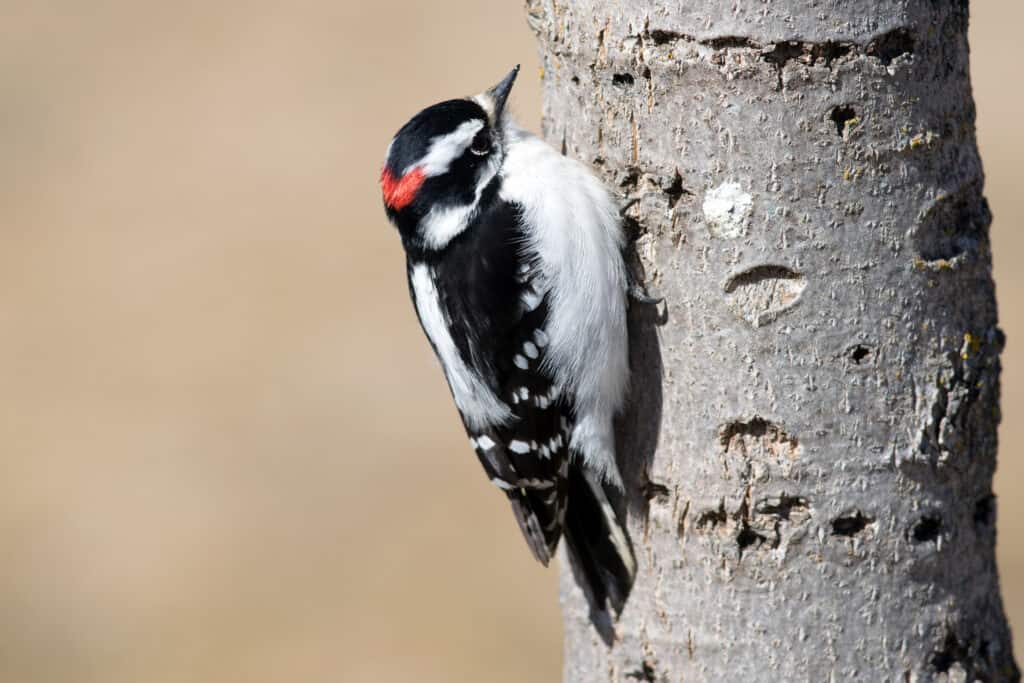
Downy woodpeckers enjoy grape jelly despite being more famous for eating bugs and nuts in trees.
©Northernguy/Shutterstock.com
While woodpeckers are most famous for eating bugs and nuts in trees, they also enjoy nectar and fruit. As a result, they love a feeder that offers grape jelly, melon slices, or any kind of citrus. Some of the species known to frequent jelly offerings are the red-bellied woodpecker (Melanerpes carolinus), hairy woodpecker (Leuconotopicus villosus), and downy woodpecker (Picoides pubescens).
6. Grey Catbirds (Dumetella carolinensis)
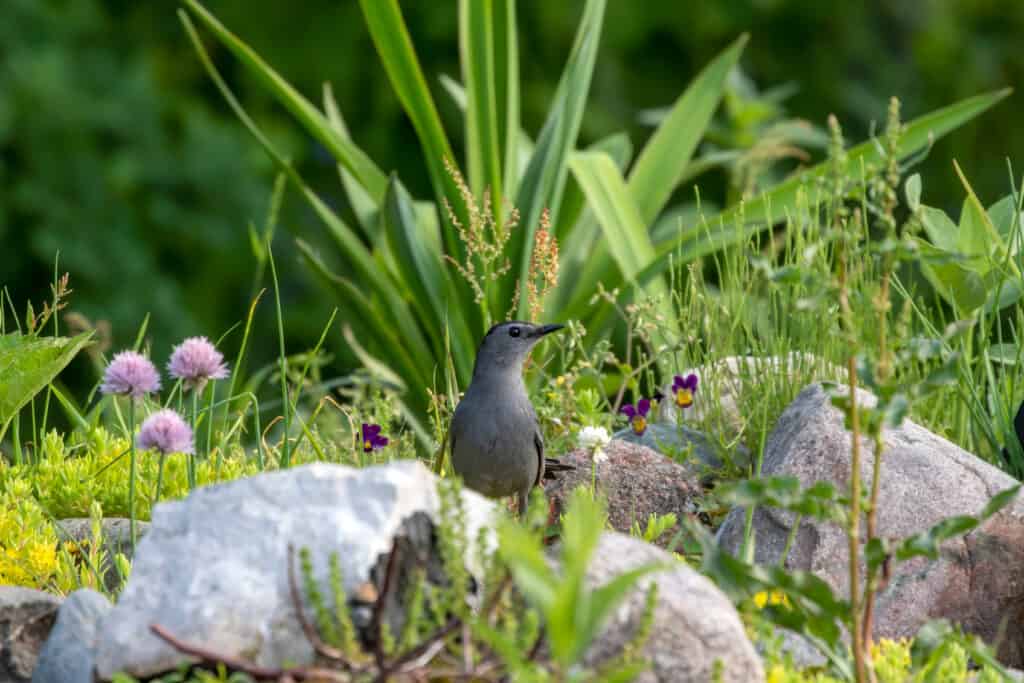
Grape jelly and berry shrubs attract grey catbirds to your yard.
©Karel Bock/Shutterstock.com
Grey catbirds like sweets and will come if grape jelly is offered. They also favor yards with berry-producing shrubs like dogwood and elderberry.
Grey catbirds are fun to attract to your yard because they sometimes sound like mewing cats. They’re noisy little tweeters and interspersed every so often is a noise that sounds like a sleepy cat vocalization. They also purposefully mimic other sounds in their environment like frogs, human mechanical components, and lots of other birds.
5. House Finches (Haemorhous mexicanus)
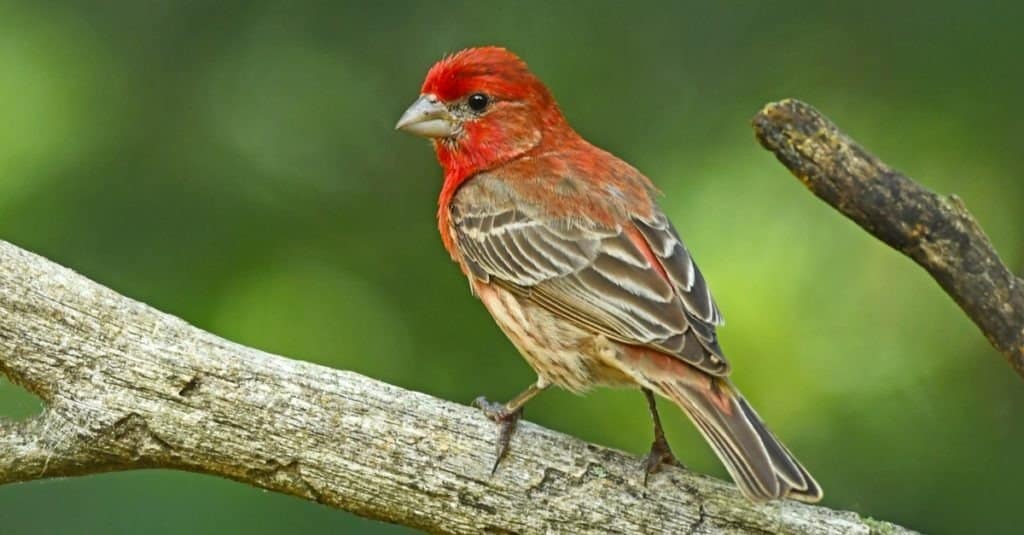
It’s not surprising house finches enjoy grape jelly since they adore eating a variety of fruit.
©Brian A Wolf/Shutterstock.com
House finches love eating fruit, and their diet is almost completely made up of plant matter. They’ll eat the fruits, buds, and seeds of many different kinds of greenery.
Along with grape jelly, house finches enjoy figs, strawberries, pears, peaches, cherries, and apricots. Because of this, they’re commonly found near orchards.
4. Warblers (Parulidae)
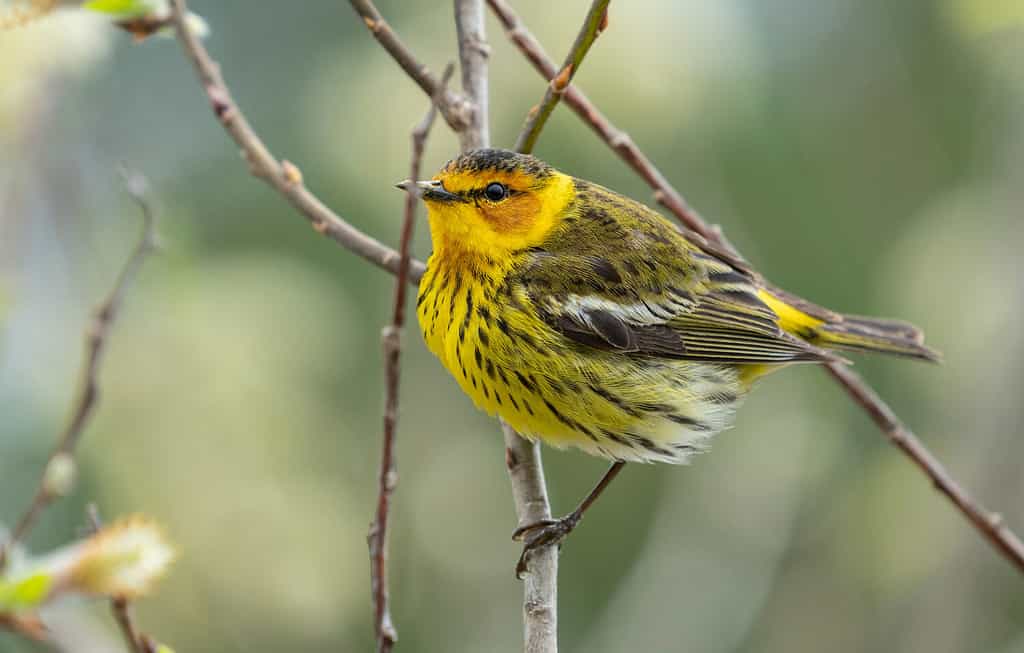
Different species of warblers, like the Cape May warbler, enjoy a grape jelly snack.
©Jeff Caverly/Shutterstock.com
Warblers are fond of grape jelly, and they’ll seize the opportunity to rest by your feeder if you’re offering up a snack. Species like the prothonotary warbler (Protonotaria citrea), Cape May warbler (Setophaga tigrina), and the yellow-rumped warbler (Setophaga coronata) are especially interested in grape jelly offerings.
3. Brown Thrashers (Toxostoma rufum)

Though they don’t devote themselves to a fruit diet, brown thrashers will eat a little grape jelly.
©iStock.com/johnandersonphoto
Brown thrashers are easily identified songbirds that are fun to observe. Their diet is mostly made up of spiders and insects, however, they also enjoy supplemental grains, fruits, and seeds. As a result, the occasional brown thrasher will stop by your jelly feeder for a quick snack.
2. Tanagers (Thraupidae)
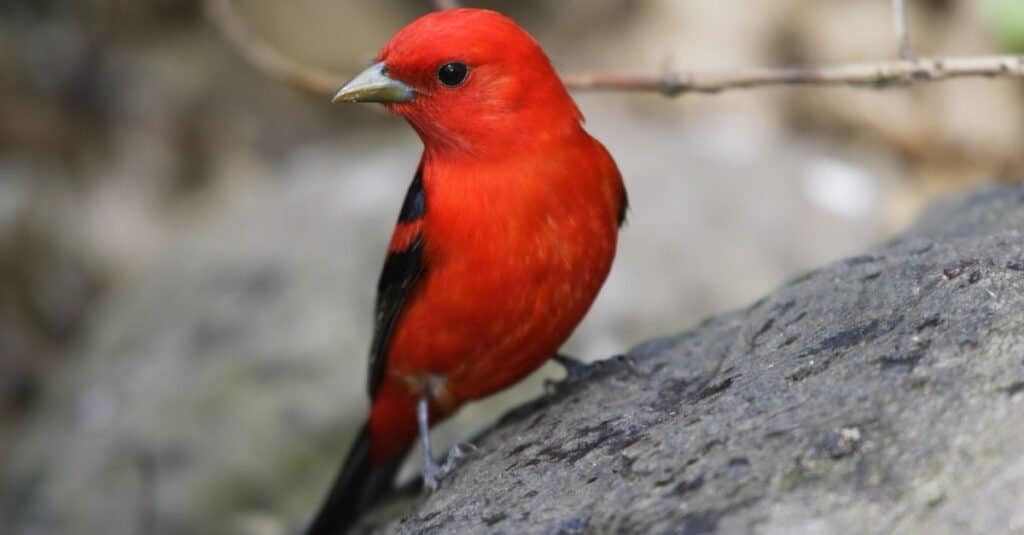
One of the more frequently spotted grape jelly-loving birds is tanagers.
©Stubblefield Photography/Shutterstock.com
Tanagers are ravenous connoisseurs of grape jelly since they seek out fruit as a large portion of their diet. They’re especially hungry for jelly in the early Spring when winter is ending but fruits still haven’t developed. Keep an eye on the tanagers and other birds visiting your feeder as some get addicted to the easy sugar source and will need to be cut off.
1. Orioles (Icterus)

The Baltimore oriole adores grape jelly and is commonly seen at feeders.
©Danita Delimont/Shutterstock.com
The orioles eating your grape jelly are likely the most thankful for your generosity. As a result, the birds you’ll see the most will be a species of oriole like the Baltimore oriole (Icterus galbula) or Bullock’s oriole (Icterus bullockii). Orioles enjoy a varied diet including many types of bugs, berries, nectars, and fruits.
Orioles are most interested in grape jelly snacks in early Spring weather which usually happens sometime in April. A common food combination for birders is to put out orange slices with grape jelly as they’re two well-documented favorites for orioles.
The photo featured at the top of this post is © iStock.com/BWFolsom
Thank you for reading! Have some feedback for us? Contact the AZ Animals editorial team.







